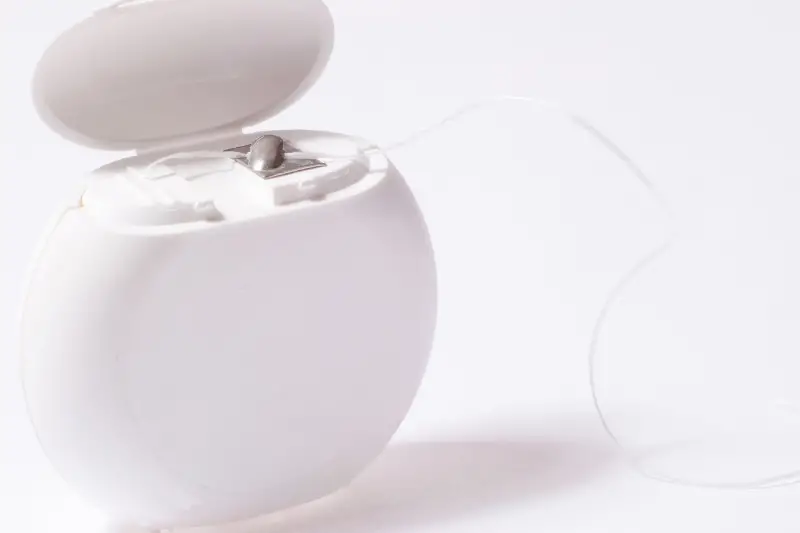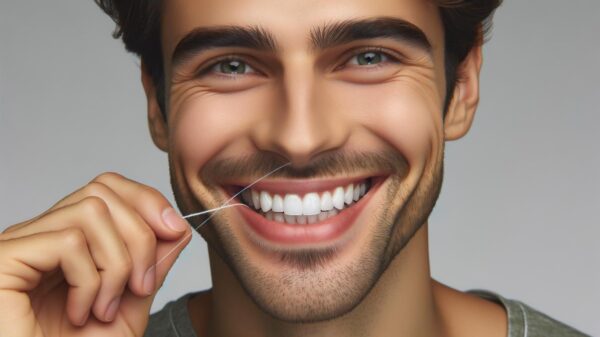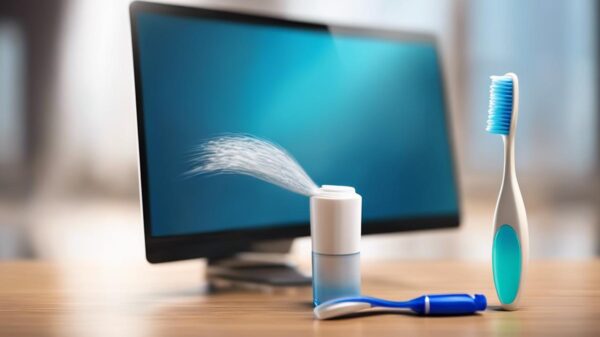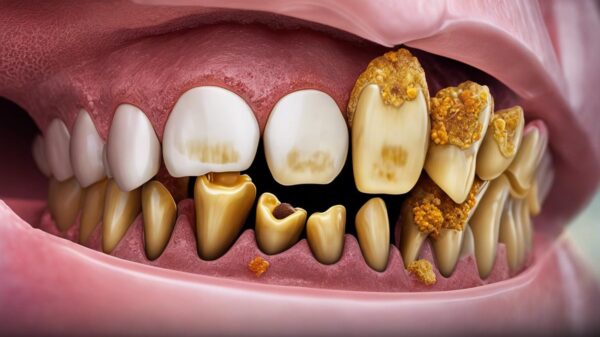Choosing the Best Type of Floss to Use
Flossing is essential to maintain the best dental health possible. Flossing is part of your oral health regimen along with regular brushing and annual visits to your dentist. In your pursuit of dental health knowing the right type of floss to use makes all the difference in the world. I decided to research the best type of floss to use for these reasons. Floss helps you reach the tooth surfaces that brushing alone will not reach.
So, what floss should I use? The type of floss you will need is based on your dental health needs. You might actually use several different types of floss. If you have large gaps between your teeth, dental tape or super floss will work best. If you have teeth that are tightly spaced with no gaps between your teeth, waxed floss will be able to slide in between your teeth best. If you want floss for your particular lifestyle; disposable flossers work great on the go with no mess.
If you have dental work such as braces or bridges a spongy floss or electric flosser will work. An electric flosser uses water or air to remove hard-to-reach particles and bacteria between your teeth. Another option if you have dental work is using a floss threader. The thin loop of the threader assists you with using your floss in difficult-to-reach areas.
In this post, I will discuss in detail the different flossing alternatives, I will also review some of the benefits of flossing for your dental health and when seeing a professional is needed if you see certain symptoms arise. I will also give you some of the most needed flossing tips to maintain a stellar smile. Continue reading for your ultimate floss selection guide.
What Floss is Best for Me?
Floss is a way to remove food particles and plaque that is difficult to reach with brushing alone. Some find it hard to floss regularly due to bleeding gums or pain. However, finding the best floss to use can make the difference.
Dental Tape
Dental tape or super floss is best used for those with gaps and space between their teeth. This flossing alternative is wider and flatter than your average floss. Super floss comes waxed or unwaxed. Super floss is a stiff-end dental floss threader. The soft woven end of super floss will enable you to fit it comfortably around dental work and catch debris. This is essential if you have dental work such as a crown or bridge.
Waxed Floss
Waxed floss is great if your teeth tightly sit next to one another. Waxed floss is made of nylon and coated with a thin layer of wax. This layer of wax makes it easier to glide in between your teeth. Waxed floss also can come in different flavors which can help freshen your breath. Waxed floss is stronger than unwaxed and therefore is less prone to snapping when you use it.
Disposable Flossers
Another option includes disposable flossers also know as floss picks. These are great if you are on the go. However, most dentists recommend that you primarily use a traditional type of floss for regular use. Floss picks seem to be good options for those who have trouble holding and maneuvering traditional floss.
However, regular use of this type of floss can present some challenges. With floss picks you are using the same segment of floss throughout your mouth. In doing this you are redistributing food particles and bacteria throughout your mouth. If your teeth are tightly packed together using a floss pick will be difficult to move between your teeth and you might have fraying of the floss itself. Lastly, a floss pick prevents you from cleaning around each tooth and the gum line effectively since the segment of floss is so small.
Benefits of Flossing
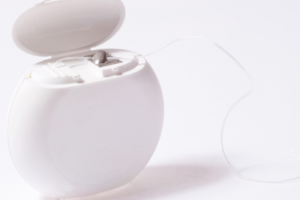 Flossing is one of the best things you can do for your dental health. Brushing your teeth only cleans the surface of your teeth. You need a way to be able to get to the food particles, bacteria, and other debris between your teeth.
Flossing is one of the best things you can do for your dental health. Brushing your teeth only cleans the surface of your teeth. You need a way to be able to get to the food particles, bacteria, and other debris between your teeth.
Most people do not realize how much good oral health can affect your health in general. Flossing helps you prevent plaque buildup.
The American Dental Association says that 80% of plaque can be eliminated by flossing. Dental plaque is a sticky, colorless film that forms between your teeth and along the gum line. It contains saliva, food, fluids, and bacteria. It forms on teeth 4-12 hours after brushing.
Bacteria found in plaque can be disastrous to your teeth. This bacteria if left on your teeth can break down your tooth enamel and cause cavities, bad breath, yellow teeth, and gum disease. Plaque not removed by flossing will mineralize into tartar which must be removed by a dental professional. Untreated gum disease can affect your overall health.
Gum disease is a risk factor for heart disease, diabetes, and higher body mass indexes. Flossing also helps with bad breath. Bad breath is often caused by decaying food left in between your teeth. This can cause cavities and eventual gum disease which also can lead to bad breath.
Symptoms to Watch Out for When Flossing
By now you probably can see the great benefits of flossing. However, there are some things you should be aware of when it comes to flossing. You might not be so happy to floss due to symptoms you might be experiencing. Sometimes flossing can be painful. This is so for an assortment of reasons.
If the pain you experience during flossing is located in a singular spot you could have tooth decay or cavities in those areas. Signs of tooth damage could be sensitivity to temperature changes in your mouth or pain while eating. If this is the case, you need to be seen by a dentist as soon as possible for help.
You also could be experiencing tooth sensitivity. This can occur when you have damage to your tooth enamel, your tooth’s protective layer. If you have tooth sensitivity flossing could be painful. You also probably experience pain when drinking hot or cold beverages, discomfort while eating, and feel sensitivity in your mouth when around cold climates or colder air. This is a condition that can be easily treated by a dental professional.
If you have gum disease flossing will be painful. However, brushing and flossing are paramount to restoring your teeth and gums to health. Signs of gum disease or gingivitis are redness, inflammation, bleeding gums, tenderness, and bad breath. To permanently cure gum disease you will need to be seen by a dentist.
Flossing Tips
We have seen how important flossing is for good oral hygiene. However, we still need to look at proper flossing techniques and other tips. When using floss make sure you have a minimum of 18 inches to properly floss all your teeth. You must use clean areas of the floss for each tooth and make sure you glide the floss around your tooth especially at the gum line.
Another tip is to use a floss holder if you have trouble reaching the areas in the back of your mouth. Try an air or water flosser especially if you have dental work which would require a floss threader. If you have issues maneuvering around each of your teeth this type of flosser could work well for you.
Lastly, carry floss with you. At first, this might be difficult or annoying. Doing this helps you to remove food that gets stuck in your teeth when it first occurs. This will help cut down any tooth discomfort you might experience. Carrying floss with you will also help you to maintain a regular flossing regimen no matter where you are.
Related Questions
Should I use an electric flosser or just standard floss? This depends on your situation. An electric flosser is designed for individuals who have a hard time using standard floss usually due to their dental work. Electric flossers usually use air or water to clean between the teeth and around the gum line. An electric flosser is also a good option if you struggle with traditional flossing.
How often do I need to floss? Dental professionals recommend that you floss at a minimum one time daily. However, flossing twice per day is preferred. You should brush your teeth at least twice per day. It does not make a difference if you brush or floss first. However, when you do floss you must make sure you are doing it properly slowly, and thoroughly to reach those difficult areas of your mouth. The key is your consistency.
Can I replace flossing with mouthwash? No, you cannot replace flossing with mouthwash. Flossing and mouthwash have different purposes. Therapeutic mouthwashes are designed to kill bacteria in your mouth. They help reduce plaque build-up and tartar formation. They also help prevent cavities, bad breath, and gum disease. Flossing removes the plaque before it can harden and become tartar. Mouthwash will help remove the build-up, but only flossing will get between your teeth to remove the plaque. If plaque becomes tartar and is not removed it could contribute to gum disease and other dental problems.



